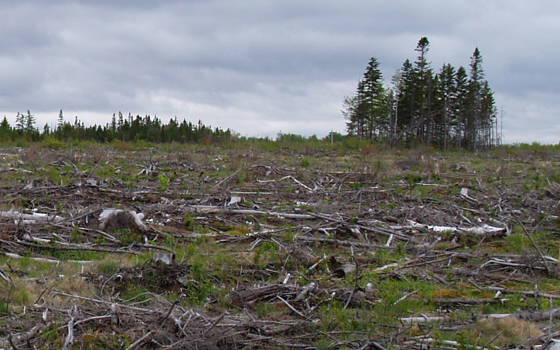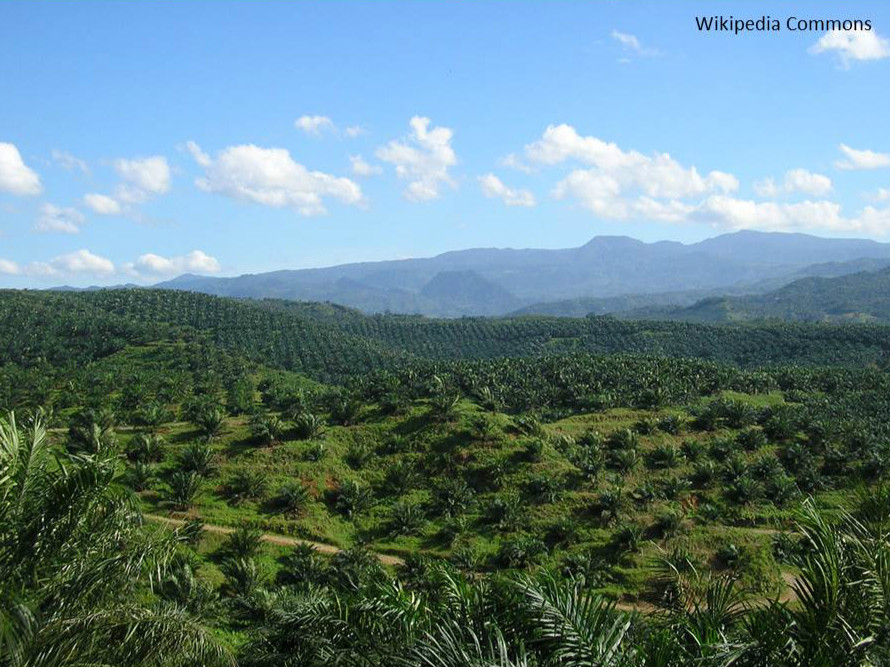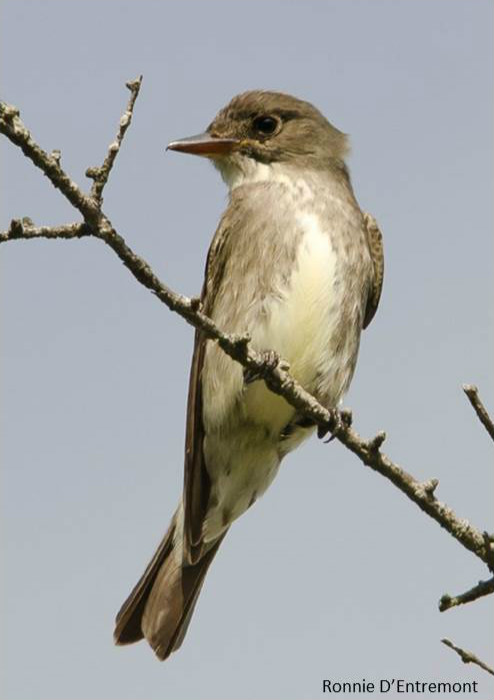There have been declines recorded in the population of Olive-sided Flycatchers since standardized surveys began in 1968. This decline is been substantial in recent decades in North America, at 29% between 1996 and 2006. In Nova Scotia, the annual rate of decline was 1.61%, compared to 2.97% for the whole of Canada during this period. The source of the decline in this species is poorly understood, although decreased habitat suitability on both the breeding and wintering grounds is suspected.
Conservation status of the Olive-sided Flycatcher nationally and in Atlantic Canada:
| COSEWIC | Threatened |
| SARA | Threatened (Schedule 1) |
| Nova Scotia | Threatened |
| New Brunswick | Threatened |
| Newfoundland at Labrador | Threatened |
Threats
The specific factors responsible for the decline in Olive-sided Flycatcher have not yet been confirmed. The extent to which these factors have affected the persistence and survival of this species have not yet been quantified.
Ecological Changes:
- The Olive-sided Flycatcher is an aerial insectivore, which means it eats flying insects. Insect populations have declined in recent decades for many reasons (e.g. habitat loss, habitat acidification, and pesticide use). Further, climate change has caused a temporal mismatch in the peak of insect abundance and the breeding season of many aerial insectivores. These birds may be struggling to adapt to such changes in their prey base
- Reduction in edge habitat as a result of forest fire suppression programs by humans – burned areas create habitat for this species and are associated with high breeding success.
Breeding Habitat Loss and Degradation: 
- Habitat loss and degradation due to human activities such as forestry, silviculture, resource extraction (mining, oil, and gas) across the breeding range.
- Habitat loss due to conversion of habitat for residential and commercial development.
Winter Habitat Loss and Degradation:
- Habitat loss due to deforestation and conversion of habitat to agricultural and other land uses.
- Wide-spread habitat loss from deforestation has altered approximately 90% of the wintering habitat in northern South America. This deforestation continues to occur and the Andean sub-tropical forest is currently one of the most threatened forests in the world.
Sources: Recovery Strategy for Olive-sided Flycatcher in Canada (ECCC); Species at Risk Public Registry: Olive-sided Flycatcher (ECCC); Birds of North America Online: Olive-sided Flycatcher

